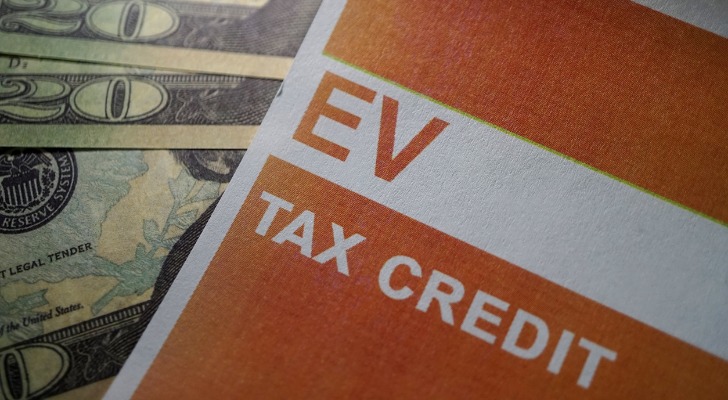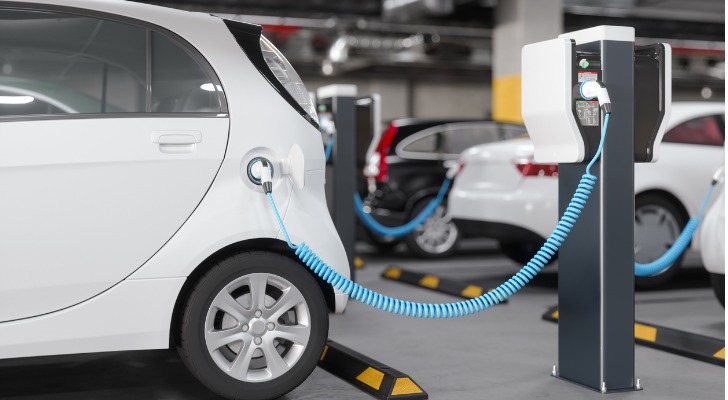I purchased a Ford electric vehicle in February 2023. According to the IRS, it qualifies for a $6,843 tax credit. So in order to get my taxes to this amount, I’m not paying estimated taxes and will take a little more than my required minimum distribution from my IRA to get my tax liability up to about $7,000. Will this be OK with the IRS?
– Dennis
Since the electric vehicle (EV) tax credit is a non-refundable credit, it may take some planning to maximize the benefits. The answer depends on your total taxable income, deductions and credits to help you figure out the best steps to take. However, making financial moves strictly based on their tax effect can cause harm to your overall financial plans. And skipping estimated tax payments will probably result in the IRS charging interest and penalties, without actually doing anything to help maximize the EV credit. (Plus, as the details of your tax situation may change during the year, it makes sense to consult with a financial advisor before you act).
What Is the EV Tax Credit?
When you buy a new eligible plug-in electric vehicle (EV), you may qualify for a special tax credit of up to $7,500. This comes as part of the Inflation Reduction Act of 2022 and covers EVs purchased from 2023 to 2032.
The full credit is based on a couple of different factors, including the month in which you took delivery of the vehicle. If you physically received – not just bought – your vehicle between Jan. 1 and April 17, 2023, your tax credit amount will be based mainly on battery capacity. If you got your vehicle on or after April 18, the total credit will be:
- $3,750 if at least 40% of the battery’s critical minerals were extracted or processed in the U.S. (or its free trade partners) plus
- $3,750 if at least 50% of the battery components were made or assembled in North America
A vehicle received on or after April 18 that meets only one requirement may only be eligible for a $3,750 credit. You can find more information about the specifics of the EV tax credit here. (And if you need help understanding how the 2022 law applies to you, consider matching with a financial advisor.)
Who Can Take the EV Tax Credit?
To qualify for the EV tax credit, you’ll need to meet some requirements. Most of those are related to the vehicle, and some are related to other things like your adjusted gross income (AGI).
Here are some of the key requirements:
- You have to buy the vehicle to use it (and not just resell it).
- It must be driven mainly in the U.S.
- The vehicle must undergo final assembly in the U.S. and be made by a qualified manufacturer. You can find out if your vehicle qualifies here.
- The MSRP can’t be more than $80,000 for pickups, SUVs and vans or more than $55,000 for cars.
- The seller must report all required information to both you and the IRS at the time of sale.
On the income side, you’ll be eligible to take the credit if your AGI doesn’t exceed:
- $150,000 for single filers or married couples filing separately
- $300,000 for married couples filing jointly
- $225,000 for heads of household
If you meet all the requirements, you’ll be able to take up to $7,500 in tax credits – a huge reduction to your 2023 tax bill. (And if you need help gauging your eligibility for this credit, consider matching with a financial advisor.)
How Tax Credits Work

Whenever you can take advantage of a tax credit, do it. Tax credits reduce your tax bill dollar for dollar. So if you’re eligible for the full $7,500 EV Tax Credit, it will slash your taxes by the full $7,500. In contrast, tax deductions reduce your taxable income. That has the effect of decreasing your tax bill, but only by a percentage. So if you got a $7,500 tax deduction you may only get a $750 tax break, for example, depending on your tax rate. You can see why tax credits are better than tax deductions when it comes to reducing your tax bill.
There are two basic types of tax credits: refundable and non-refundable. Refundable tax credits can reduce your tax bill below zero, and you’d get that money back. For example, if your total tax bill came to $7,000 and you got a $7,500 refundable tax credit, the IRS would give you $500. Non-refundable tax credits can reduce your tax bill to zero, but you won’t get any extra money refunded because of them.
The EV Tax Credit is a non-refundable tax credit. It can reduce your tax bill to zero but won’t snag you any extra refund money. (And if need help understanding how tax credits work and how best to take advantage of them, consider working with a financial advisor.)
Total Tax and Tax Payments
When you file your income tax return, you’ll either get a refund or have to make a payment. Both of those are the result of the difference between your total tax owed and the amount you paid. If you paid more than you owed during the year, you’ll get a refund. If you paid less than you owed, you’ll make a payment.
It’s important to remember that the payments you make don’t change your total tax amount; they only affect whether you’ve overpaid or underpaid.
Your tax preparer can help you figure out the impact that tax credits will have on your total tax bill. They can also help you decide if you can or should temporarily change your withholding taxes or estimated tax payments after taking the tax credits into account. (And if you need help with tax planning, consider matching with a financial advisor.)
Altering Income to Capture Tax Credits

Sometimes it makes sense to make specific financial moves to take full advantage of tax credits, and sometimes it doesn’t. It takes careful planning, a working knowledge of the tax code and a complete understanding of the other financial implications of the move.
For example, taking extra money out of a retirement account to increase taxable income enough to get a bigger tax credit could result in other issues. It might put your income over the applicable limit for that credit, causing you to lose it. It could bump you into a different tax bracket and increase your total tax bill more than expected. And on top of unintended tax consequences, it will reduce the account’s earning and growth potential, which could affect your future finances. (Consider working with a financial advisor to help you take full advantage of available credits or deductions.)
Bottom Line
Whether you qualified for the EV Tax Credit under the Inflation Reduction Act of 2022 depends on when you received your vehicle, where its battery minerals and components were processed or assembled, as well as your adjusted gross income (AGI). The non-refundable credit can enable you to lower your tax bill by $7,500 in 2023, but keep in mind that altering your income can have unintended financial consequences and leave you ineligible for the credit.
Tips for Finding a Financial Advisor
- Finding a financial advisor doesn’t have to be hard. SmartAsset’s free tool matches you with up to three vetted financial advisors who serve your area, and you can interview your advisor matches at no cost to decide which one is right for you. If you’re ready to find an advisor who can help you achieve your financial goals, get started now.
- Consider a few advisors before settling on one. It’s important to make sure you find someone you trust to manage your money. As you consider your options, these are the questions you should ask an advisor to ensure you make the right choice.
Michele Cagan, CPA, is a SmartAsset financial planning columnist and answers reader questions on personal finance and tax topics. Got a question you’d like answered? Email AskAnAdvisor@smartasset.com and your question may be answered in a future column.
Please note that Michele is not a participant in the SmartAdvisor Match platform.
Photo Credit: ©iStock.com/onurdongel, ©iStock.com/Kameleon007
